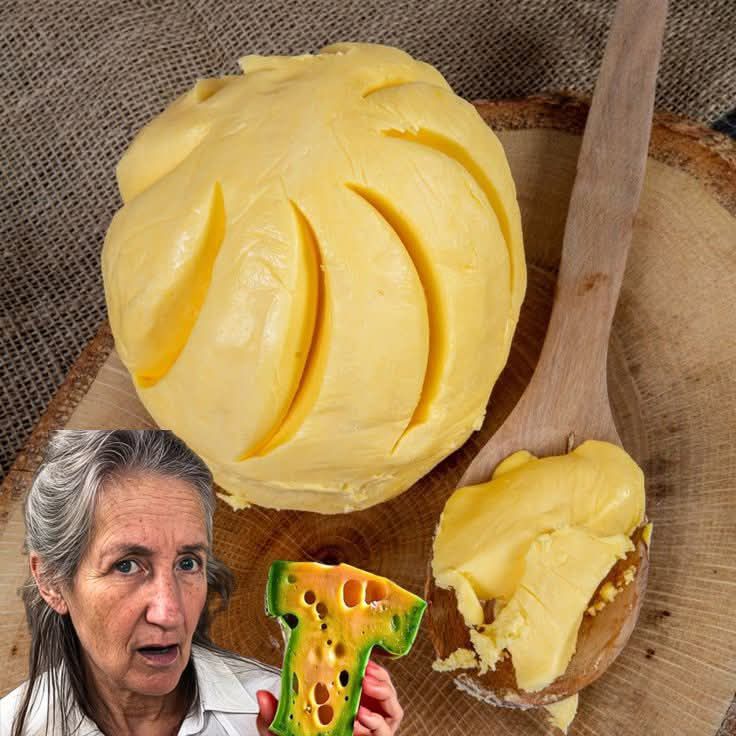ADVERTISEMENT
Ingredients:
- Milk: This is the base for all cheese. Whole milk is commonly used for creamier cheeses, while lower-fat milk can work for firmer cheeses.
- Rennet: An enzyme that helps the milk coagulate and form curds. You can find rennet in both animal and vegetable-based varieties.
- Starter culture: Bacteria used to acidify the milk, giving the cheese its characteristic flavor and texture. For soft cheeses like ricotta or mozzarella, a simple starter culture will work. For harder cheeses, you may need specific cultures.
- Salt: This helps preserve the cheese and enhances its flavor. Non-iodized salt, such as kosher or sea salt, is recommended.
Step-by-Step Guide to Making Cheese at Home:
1. Choose Your Cheese Recipe
The first step is deciding which type of cheese you want to make. Some popular beginner cheeses include:
- Ricotta: A soft, fresh cheese that’s quick and easy to make.
- Mozzarella: A semi-soft cheese that’s perfect for pizza, pasta, or snacking.
- Paneer: A fresh, Indian cheese that doesn’t require aging.
- Cream Cheese: Soft and tangy, great for spreads or desserts.
Once you’ve chosen your recipe, you can follow these basic steps, which are common across many types of cheese.
2. Heat the Milk
Pour your milk into a large pot and begin heating it over medium heat. Use a thermometer to monitor the temperature closely. The milk should be heated to around 85-90°F (29-32°C) for most soft cheeses and higher temperatures for harder cheeses (around 130°F or 55°C). Stir gently to prevent the milk from scorching at the bottom.
3. Add the Starter Culture
Once the milk has reached the desired temperature, it’s time to add the starter culture. Sprinkle the culture over the surface of the milk and let it rehydrate for a minute or two. Then, gently stir it in using a long spoon or whisk. Allow the milk to rest for 30 minutes to an hour, depending on the recipe, while the bacteria begins to acidify the milk.
4. Add the Rennet
Once the milk has acidified, you can add the rennet. Dissolve a small amount of rennet (usually about 1/4 teaspoon) in a little bit of cool, chlorine-free water. Slowly pour the rennet solution into the milk while stirring gently. Cover the pot and let the milk sit undisturbed for about 30-60 minutes. During this time, the milk will coagulate into curds (solid) and whey (liquid).
5. Cut the Curds
Once the curds have formed, use a long knife to cut them into small cubes (about 1/2 inch in size). This will help the curds release more whey as they cook. After cutting, allow the curds to sit for a few minutes to firm up.
6. Cook the Curds
Gently heat the curds by raising the temperature of the milk to about 100°F (38°C) for softer cheeses or up to 130°F (54°C) for harder cheeses. Stir gently and constantly to prevent the curds from sticking together. The curds will shrink and expel more whey as the temperature increases.
7. Drain the Whey
Once the curds have been cooked and have reached the desired consistency, it’s time to drain them. Carefully ladle the curds into a colander lined with cheesecloth to separate the whey from the curds. For cheeses like ricotta or paneer, this step is fairly simple. For mozzarella, you may need to knead the curds in hot water to stretch them into the familiar cheese texture.
8. Press the Curds (If Needed)
For firmer cheeses like cheddar or gouda, you’ll need to press the curds to remove excess whey and shape the cheese. This can be done using a cheese mold and pressing the curds with a weight or a cheese press.
9. Salt the Cheese
Once the curds are drained and pressed, it’s time to salt your cheese. Salt enhances flavor and helps preserve the cheese. Rub the salt directly into the curds or dissolve it in a brine solution, depending on the type of cheese you’re making.
10. Age Your Cheese (Optional)
For some cheeses, aging is necessary to develop flavor and texture. Depending on the recipe, your cheese may need to be aged in a cool, humid place for several days, weeks, or even months. Soft cheeses like ricotta or mozzarella can be eaten right away, while harder cheeses like cheddar or parmesan need to be aged for deeper, more complex flavors.
Tips for Success:
- Sanitize Everything: Cleanliness is key when making cheese, as bacteria and molds can spoil your batch. Always sanitize your equipment, pots, and utensils before starting.
- Patience is Key: Cheese-making requires patience, as the curds need time to form and set properly. Don’t rush the process.
- Experiment: Once you’ve mastered basic cheese-making techniques, don’t be afraid to try new flavors, herbs, and spices. Infuse your cheeses with garlic, basil, or even chilies for unique, customized results.
Final Thoughts
Making cheese at home is an incredibly fulfilling and educational experience. Not only do you get to enjoy the satisfaction of creating your own food from scratch, but you also get to taste fresh, delicious cheese that you can’t find in stores. Whether you’re making a simple ricotta or embarking on an adventure into hard cheeses like cheddar or gouda, the process is both fun and rewarding.
So, roll up your sleeves, gather your ingredients, and begin your cheese-making journey today. It’s a delicious, creative way to dive into the world of artisanal food right from your own kitchen!
ADVERTISEMENT
ADVERTISEMENT
